Tucked in the northern highlands of Vietnam, Sapa is known for its terraced rice fields, ethnic diversity, and misty charm, but it also offers a culinary landscape shaped by cold weather, high-altitude farming, and deeply rooted traditions. From street-side skewers to ancestral stews, here are 10 dishes to try in Sapa, and where to find them.
Also read: 3D2N Sapa Itinerary: How to Plan the Perfect Side Trip from Hanoi
1. Smoked buffalo jerky (thịt trâu gác bếp)
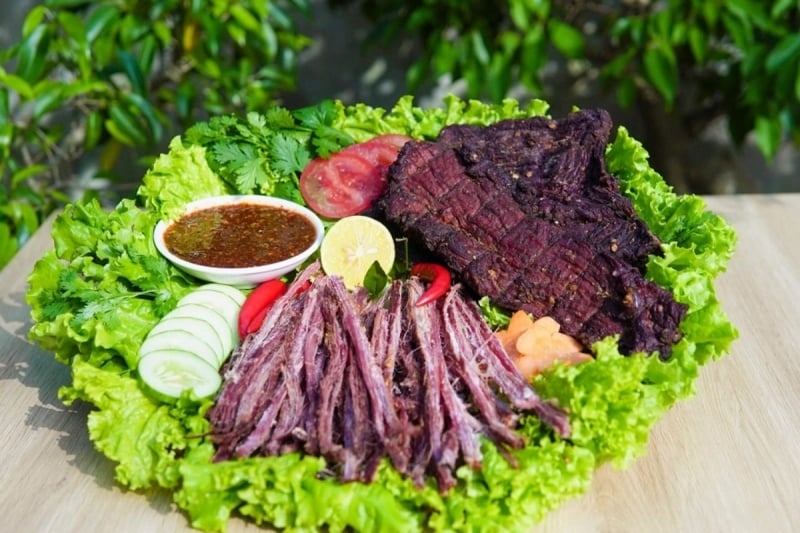
Image Credit: FPT Shop Official Website
This chewy, flavour-packed jerky is a staple among the Tai Dam people, who preserve lean cuts of buffalo or beef by curing them with wild spices like mắc khén (a citrusy mountain pepper) and slow-smoking the meat over wood fires. It was traditionally made to last through long treks in the mountains. Today, it’s one of the most distinctive snacks you can bring home from Sapa. Though specific vendors change, vacuum-packed versions are widely available at stalls in the pierce and village markets. You can also try it warm from the grill at the Sapa Night Market along Điện Biên Phủ Street.
2. Bamboo sticky rice (cơm lam)
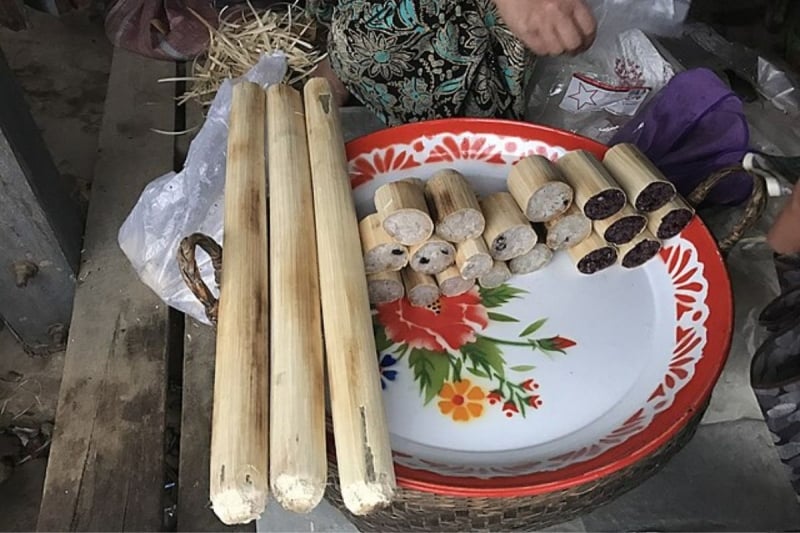
Image Credit: Sai Htun Lin via Wikimedia Commons
A humble yet comforting dish, cơm lam originated from the Tai, H’Mông, and Tày people in Northwest Vietnam . Glutinous rice is packed into bamboo tubes, sealed with a banana leaf, and roasted over hot coals. As the rice cooks, it absorbs the subtle aroma of the bamboo, resulting in something lightly smoky, sweet, and filling, making it the perfect mountain snack. You’ll often find it at roadside stalls near Cát Cát Village or served alongside grilled meats at Red Dao Restaurant, located near Silver Waterfall.
3. Five-coloured sticky rice (xôi ngũ sắc)
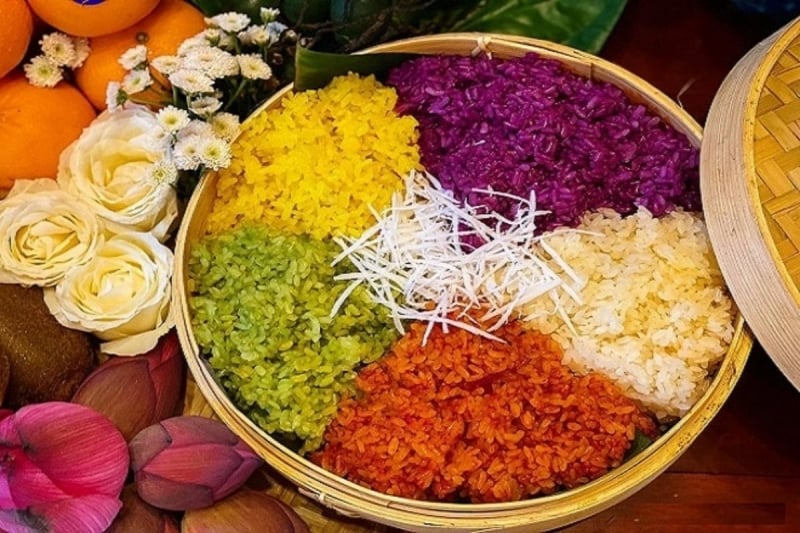
Image Credit: Tây Bắc TV Official Website
This vibrant dish is both delicious and symbolic. Made using natural plant dyes from leaves and flowers, each colour in xôi ngũ sắc represents a different element — water, fire, wood, metal, and earth — in the cosmology of the Tày and H’Mông ethnic groups. It’s traditionally prepared for festivals, weddings, and harvest celebrations, though you can often find it sold in small portions at the weekend markets in Sapa. Look for it alongside other sticky rice varieties and steamed cakes.
4. Salmon or sturgeon hotpot (lẩu cá hồi / cá tầm)
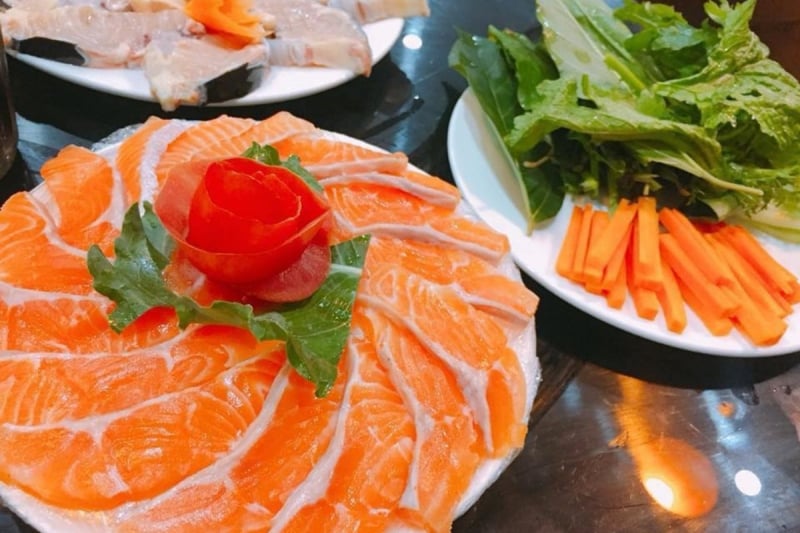
Image Credit: Halosa Spa Official Website
Thanks to its cool climate and freshwater streams, Sapa has developed a reputation for raising highland fish like salmon and sturgeon. These are usually served in hotpot form — a bubbling broth flavoured with lemongrass, dill, and sour local herbs, accompanied by fresh vegetables and noodles. It’s especially satisfying on a chilly evening. Head to Song Nhi Restaurant, which has two branches (including one near Silver Waterfall) and is well-known for its flavourful, generous portions.
5. Horse meat stew (thắng cố)
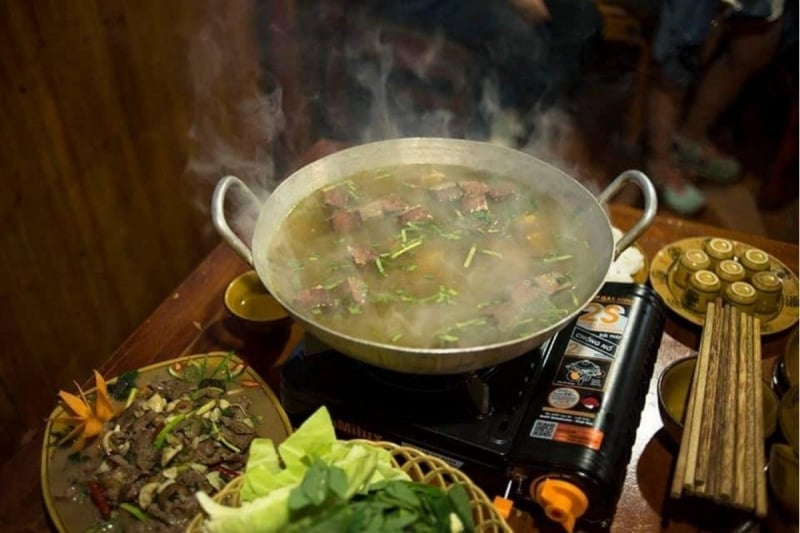
Image Credit: Sapa Tourism Official Website
Often described as Sapa’s most “challenging” dish, thắng cố is a traditional stew originating from the H’Mông people. Historically cooked with horse meat, offal, and bone marrow, the stew simmers for hours with a mix of spices including cinnamon, coriander seed, and cardamom, producing a rich, gamey broth. It’s typically enjoyed communally, especially during village festivals. For travellers, A Quỳnh Restaurant in central Sapa offers a more approachable version. It’s still traditional, but cleaner-tasting and made with beef or pork offal.
6. Armpit pig roast (thịt lợn cắp nách)
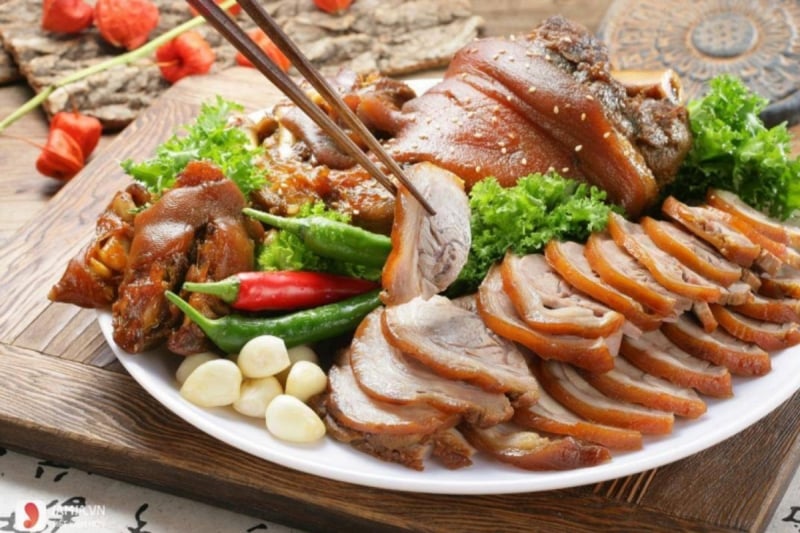
Image Credit: Ha Giang Tourism Official Website
Named for how they were once carried under the arm to market, cắp nách pigs are a small, indigenous black pig breed raised semi-wild in the mountains. The meat is lean and fragrant, and the dish is usually prepared by marinating the whole pig in garlic, salt, and local herbs before roasting until the skin crisps. It’s best enjoyed hot off the spit. Try it at Sapa A Phú Restaurant, a reliable spot that grills these pigs daily and serves them with sticky rice or sautéed forest vegetables.
7. Sapa-style spring rolls (nem Sapa)
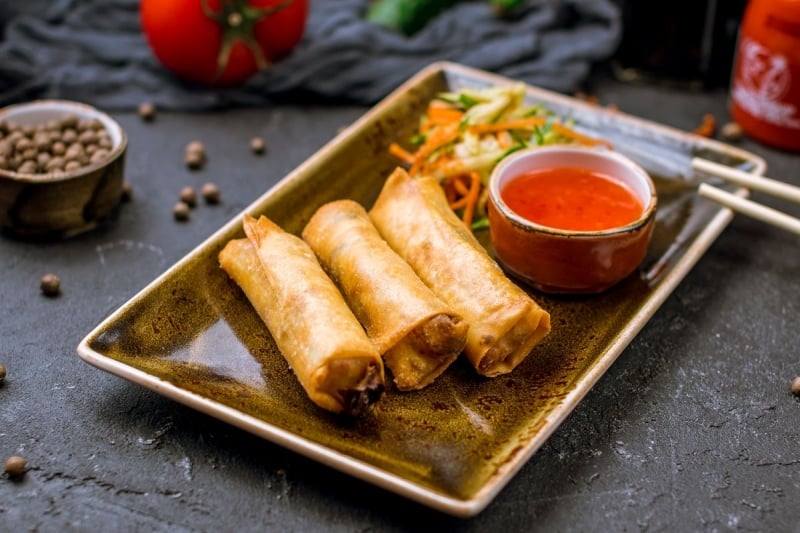
Image Credit: Максим Крысанов via Canva Pro
Sapa’s version of the classic nem rán (fried spring roll) is smaller and lighter, often filled with minced pork, wood ear mushrooms, and local herbs like Vietnamese balm and perilla leaf. The herbs lend a refreshing, almost citrusy flavour that pairs well with the mountain air. You’ll find excellent versions at both Good Morning Vietnam Café and Ladybird Restaurant, which take care to use fresh, locally sourced fillings.
8. Wild mushroom and herb dishes
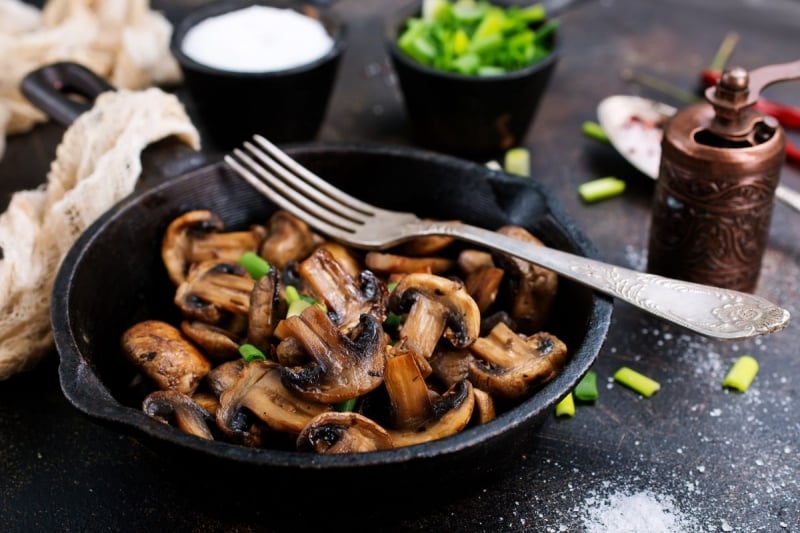
Image Credit: Yana Gayvoronskaya via Canva Pro
The hills and forests around Sapa are rich in seasonal wild mushrooms and herbs, foraged between May and October by local villagers. Popular varieties include shiitake, black wood ear, and delicate funnel-shaped fungi often sautéed in garlic or added to brothy soups. These dishes are as much about freshness and seasonality as flavour. For something simple but well-executed, try Moment Romantic Restaurant, or opt for a homestay meal where ingredients come straight from the hillside.
9. Grilled mountain skewers
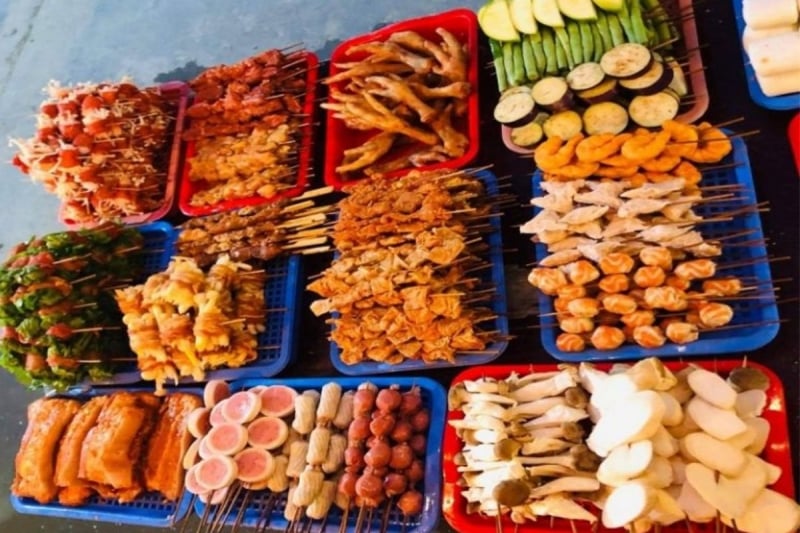
Image Credit: Sapa Tourism Official Website
In the evenings, Cầu Mây Street transforms into an open-air grill alley. Stalls line the road with glowing charcoal pits, offering skewers of pork belly, mushrooms, chicken wings, and even rice cakes. Marinated in sweet soy, garlic, and chilli flakes, then cooked to order, these skewers are the heart of Sapa’s casual food scene. Sapa Night Market is another great spot to try a variety, especially when the weather cools and the grills heat up.
10. Corn wine (rượu ngô)
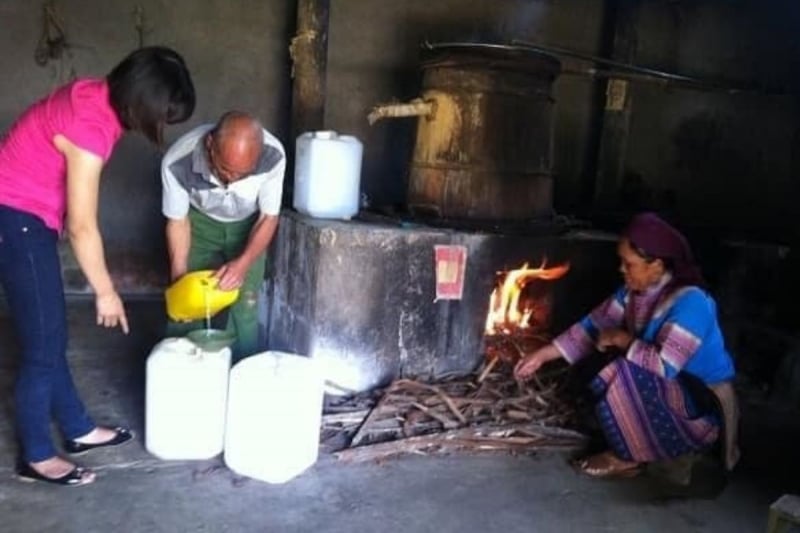
Image Credit: Sapa Tourism Official Website
A strong local liquor distilled from mountain-grown corn, rượu ngô is part of everyday life in the highlands. Traditionally brewed in clay jars and drunk from bamboo straws, it’s offered to guests as a gesture of warmth and community. The taste is sweet, smoky, and surprisingly smooth, though the kick comes fast. You’ll often be invited to try it at homestays in Tả Phìn or Cát Cát Village, especially if you sit down to a family-style dinner.
Also read: Where to Eat in Da Nang, Vietnam: 10 Must-Try Places For First-Time Visitors
Final thoughts
Eating in Sapa isn’t just about filling up. It’s a way to connect with the rhythms of mountain life with its changing seasons, the quiet pace, the close relationship between people and the land. Whether you’re warming your hands over a bubbling hotpot or sharing corn wine with a homestay host, the food here offers a glimpse into local traditions and daily living. These are meals that stay with you, not just for their flavours, but for the stories they carry.




